
Commentaries | Feb 12,2022
A visit to one of the butcheries dotting the streets of Addis Abeba is a rare treat for Sisay Negesse. The 51-year-old is a driver for a private company, earning a gross salary of 5,000 Br a month. It is barely enough to provide for his two children, lest he splurges on a butchery meal.
Last week, a visit from a close friend persuaded Sisay to loosen his purse strings for a culinary experience that has become something of a ritual among the capital's residents.
To avoid any unwanted surprises, he chose to take his friend to a familiar butchery he had visited five months ago - Kulubi Gebriel Butchery, in the Riche area of Kirkos District. The establishment, open for eight years, serves goat meat in qurt (raw meat cubes) and tibs (stir-fried beef). Sisay was undoubtedly eyeing the fatty, glistening meat hanging in the butchery as he walked in, contemplating which cuts he would have with his friend.
His contemplation was quickly cut short. A waiter had promptly informed Sisay that a kilogramme of goat meat was on offer for 850 Br, 250 Br more than the last time he had visited the butchery. Dejected, Sisay and his friend had to make do with ordering half a kilo before joining the other patrons enjoying their meals and sipping on cool glasses of beer.
“I wasn't ready for such an unpleasant surprise,” said Sisay.
The butchery was half packed last Tuesday, the third day of service after it reopened its doors following eight weeks of Lent. The place is eye-catching on the inside, clad with shiny ceramic and glass. Mesganaw Chekol, the manager, oversaw service and directed his staff as Sisay tucked into his meal. The butchery was serving goat meat that Mesganaw had bought for 12,000 Br. Before the Lent, a kilo of meat at the eatery would have gone for 750 Br. Customers who wished to buy a cut to take home were charged 100 Br less.
Mesganaw argued the price increase is justified. Similar size and weight of goats cost him 6,000 Br four months ago. The Manager claims the butchery loses up to 3,000 Br on each despite raising prices by over 40pc since the last time Sisay had paid a visit.
A cooperative-run butchery across the street, mainly serving low-income individuals at significantly lower prices, has a situation no different from Kulubi Gabriel. Its managers could not increase prices before the fasting season began due to an agreement with local authorities. However, nothing stopped them from jacking up prices last week by 70 Br to 400 Br for a kilo of beef.
“We're operating at a loss,” said Fantu Beyene, a supervisor at the butchery.
A kilo of meat was at 300 Br during the Christmas season.
Fantu bought three bulls for the Easter holiday, paying between 49,000 Br and 64,000 Br each. He would have paid no more than 40,000 Br before the holiday last week.
To the dismay of consumers, seeing butchery owners across the city increase prices following the end of Lent may not be unfamiliar. Nonetheless, the recent price hikes are unprecedented. A week before the start of the fasting season two months ago, beef and goat meat prices had increased by as much as 100 Br a kilo. Last week, they jumped by as much as 40pc. A kilo of meat from a butchery in Addis Abeba goes for anywhere between 400 Br and 1,100 Br, depending on the type of meat and the standard of the butchery.
The state-owned Addis Abeba Abattoirs Enterprise's facility in Qera slaughters close to half a million heads of livestock each year. Most of the bulls are sourced from the Borena and Guji zones of the Oromia Regional State.
One of the five livestock markets supplies meat to butchery owners in the capital. The Bircheko market in Kolfe Qeraniyo District is where goats and sheep are traded, with the other markets designated exclusively for bulls.
The Qera livestock market in Nefas Silk Lafto District, which had been placated for the past two months due to Lent, began showing signs of life as Easter approached. Close to 2,200 heads of cattle had been sold at the market in the month leading up to the holiday.
It was much lower than in previous years, according to Tadele Mulugeta, a coordinator at the Qera market.
The primary sources of supply for butchery owners in the capital are Borena and Guji zones in the Oromia Regional State. The Amhara, Afar and Somali regional states complement supply sources the Ministry of Agriculture (MoA) estimates are covering 95pc.
A combination of drought, an ongoing civil war and militarised conflicts in many parts of these areas have hampered supplies. Pastoralists and farmers in Somali, Oromia and Southern regional states have lost 1.5 million heads of livestock to a drought the UN characterised as "one of the most severe droughts in recent history."
This is a severe blow to the livestock sector, contributing 16pc to the gross domestic product (GDP). The latest survey by the Ethiopian Statistics Service reveals the cattle population reaches 61.6 million, while the estimated number of sheep and goats is 32.86 million and 36.8 million heads, respectively.
Despite the prodigious figures and the dietary habit of raw meat, Ethiopians are not large meat consumers. Per capita consumption hovers near 8.5Kg, lower than the African average of 13Kg. The global average reached 43Kg two years ago. Officials of the Agriculture Ministry hope to see domestic meat consumption rise to 2.6 million tonnes over the coming decade, up from one million tonnes.
The goal appears ambitious and perhaps unattainable as butchers see the livestock supply shrink. The shortages worsened two months ago, a week before followers of the Ethiopian Orthodox Church began the eight-week fast.
The Borena Zone in the country's southernmost edges bordering Kenya is a major source of livestock and the setting for fierce competition among pastoralists, traders, butcheries and meat exporters. And contraband traders, too.
Supply has been disrupted in the area due to the drought, says Abreha Negash, director of research for livestock and meat products at the Meat & Dairy Industry Development Institute.
Guyo Arero, 71, lives in Borena Zone, supporting a family of eight children. Every year, he used to sell up to five heads of cattle for an average price of 40,000 Br. The drought has brought calamity to his family. His herd of 45 has been reduced to a mere eight. Unexpected heavy rainfall a few weeks ago led to the death of over a dozen of his cattle.
“The remaining are not fit for the market,” he said.
Guyo has not sold a single bull this year.
However, drought and violent conflicts are not the only factors troubling the livestock market. The upsurge in the cost of animal feed is no less rugged in driving retail prices for meat up.
Tadele Areda owns Dobo Wededo Cattle Fattening Enterprise, a 10,000sqm ranch in Adama town, 100Km east of the capital, with 70 cattle. Two years ago, the Enterprise spent 50 Br a day to feed a bull. The budget has since jumped four-fold.
Tadele blames increases on the prices of inputs for feed such as wheat and processed soybean. He is not alone in this struggle.
Guyo sold one of his camels for 45,000 Br to cover rising feed costs. Although the state supplies him with a quintal of feed every two months, it has not been enough to save his livelihood.
From traders' perspective, what distresses the livestock market is not limited to drought and conflicts. They are waylaid by "gangs" along their routes to the market who charge them “taxes”. Addis Abeba used to receive hundreds of truckfuls of cattle in the week leading up to the Easter holiday. This time around, less than a hundred were delivered, according to Moges Haile, the Ethiopian Livestock Traders Association president.
“A few traders from Harer were forced to return," Moges told Fortune. "Others were asked to pay cash to pass checkpoints.”
The head of the lobby group attributed the rise in the cost of transporting 10 bulls from Harer to Addis Abeba to 35,000 Br from 10,000 Br to the hurdles on the routes. He warns prices will keep rising unless these impediments on the roads are resolved.
Moges' is a view informed by the unpleasant experience of traders on the ground.
Zenebe Abebe is one of these traders, in the business for the last 16 years. His primary sources for cattle are farmers in the Harer area. He brought 30 heads for the holiday and sold them for anywhere between 35,000 Br to 100,000 Br. But transportation was an ordeal.
"I had to pay 3,000 Br on four occasions during this trip,” he told Fortune.
The expansion of contraband trade, where traders earn more from buyers in neighbouring Somalia, Kenya and Djibouti, is partly responsible for the market disruptions. It accounts for up to 90pc of the country's live animal exports, revealed data obtained from the Agriculture Ministry. Livestock trade in contraband is estimated at 300 million dollars annually, compared to the formal live animal exports generating 44.5 million dollars.
Beyond droughts, wars, conflicts, instabilities or contraband trade, experts prefer to see structural and complicated market chains as the plights of the livestock industry. They point out an underdeveloped livestock marketing system, poor genetics, the seasonal availability of feed, and high disease incidence.
Negassie Ameha (PhD) lectures at the animal science department of the Haromaya University, the oldest and premier academic institution for agriculture studies.
He noted livestock passes through a complex process before reaching consumers. At the farm level, transactions are carried out between farmers and itinerant buyers who travel to rural villages to buy animals. Trading at primary, secondary and terminal markets involves smaller rural traders to butchers and consumers. Primary markets are usually located in district (wereda) towns where farmers and pastoralists sell animals to others (for stock replacement), local butchers (for slaughtering) and consumers. Medium-scale traders, who collect for resale in larger regional markets, are also a party to this show.
In contrast, large-scale traders sell to consumers, slaughterhouses, and traders for exports at terminal markets in or near major towns and Addis Abeba. Cattle from Borena need to pass through at least three market centres before reaching the terminal market in Modjo town. The involvement of multiple non-value-adding actors in the supply chain indicates a loose livestock supply and marketing structure, according to Negassie.
“This creates enough room for the involvement of actors who don't add value,” said Negassie.
He refers to local intermediaries with better information than the farmers and pastoralists with weak bargaining power. The intermediaries are among the five parties in the supply chain between farmers and consumers. They are the main cattle suppliers to butcheries, abattoirs and live animal and meat exporters in Addis Abeba.
Officials of the Ministry are keen to reduce the role and involvement of brokers in the value chain. They have conducted two studies for a project, disclosed Daba Gudeta (PhD), export abattoirs senior expert.
These projects aim to build 16 collection centres in pastoral and semi-pastoral areas like Borena and Guji zones in the Oromia Regional State and Somali and Afar regional states. These are shelters where animals are kept temporarily following transactions or where the transactions can occur. They also serve as places of veterinary and animal identification monitoring. Animals are held in the centre until there are enough of them for transportation to "super stocks." These are larger ranches where livestock are aggregated from the designated collection centres.
Four collection centres in Teltel, Yabello, Wachile and Moyale will be erected to house livestock coming from Borena. The Ministry plans to erect one of these ranches on a site between Adama and Modjo towns. This would allow butcheries and abattoirs exporting to receive animals directly from the super stock, says Daba.
Abattoirs exporting meat are likely to be the biggest beneficiaries of the project.
Though there are 12 registered abattoirs, nine are actively exporting meat, mainly to the United Arab Emirates (UAE) and Saudi Arabia, which account for nearly 90pc. They exported 16,625tn of meat last year, earning the country 75.3 million dollars. An all-time high volume of meat, 20,547tn, was exported in 2018, generating 103.3 million dollars. Sheep and goat meat account for the largest share.
Animals brought to abattoirs must be certified at the super-stock for veterinary attendance and identifications. The livestock is to be kept in the super-stock for five days before being transported to the abattoirs.
The initiatives by the Ministry will mean little to people like Sisay, who cannot afford to enjoy a sizzling plate of tibs or fresh qurt with a friend. If the cost of living in the capital continues to balloon the way it is now, not many will fill the seats at innumerable butcheries in Addis Abeba.
PUBLISHED ON
Apr 30,2022 [ VOL
23 , NO
1148]

Commentaries | Feb 12,2022

Commentaries | Dec 29,2018

Agenda | Jul 09,2022
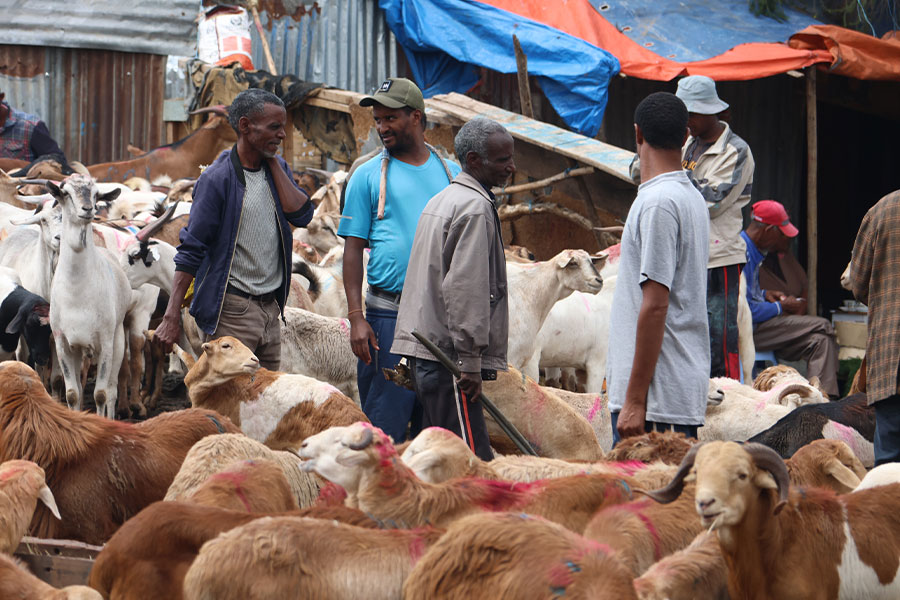
Agenda | Sep 07,2025
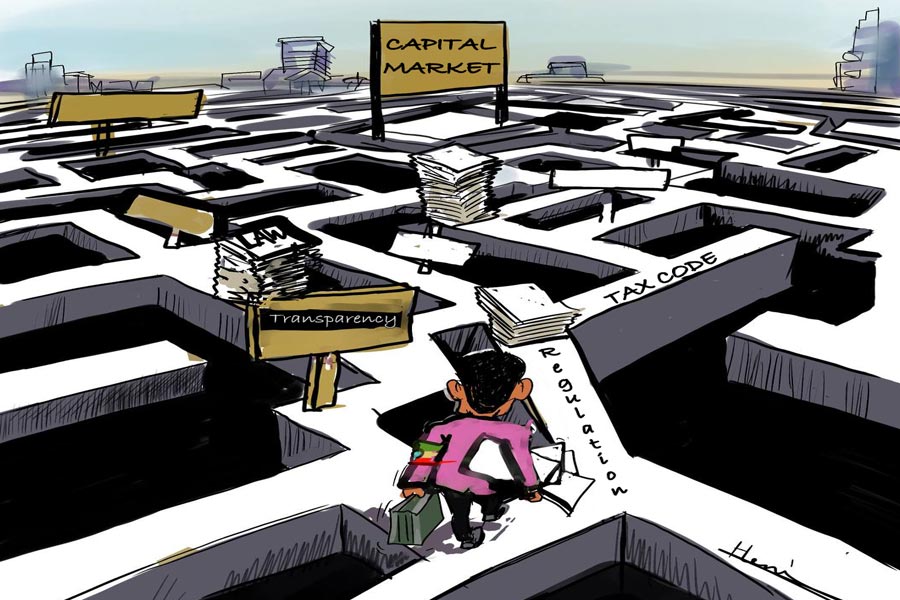
Editorial | Nov 25,2023

Fortune News | Jul 21,2024
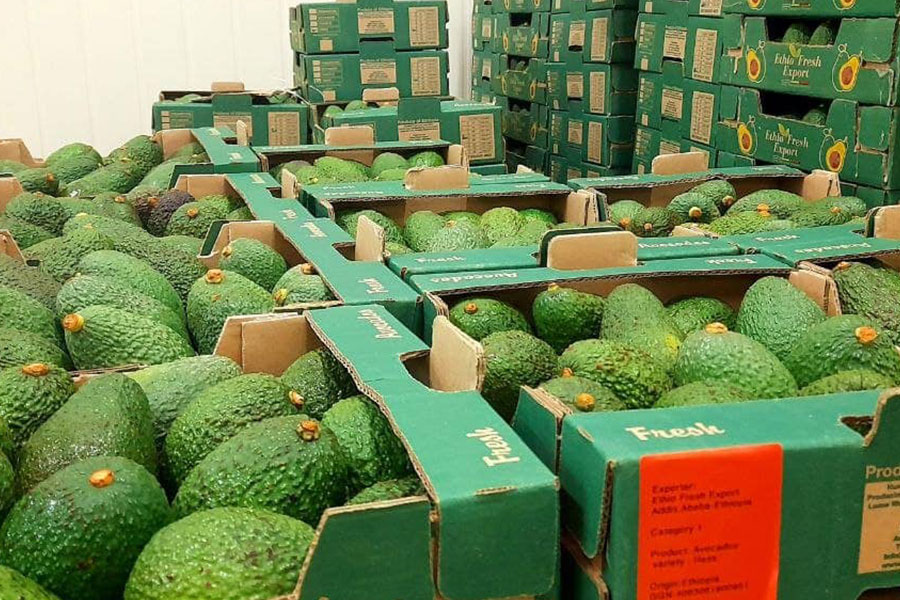
Featured | Oct 30,2021

Featured | Apr 30,2021
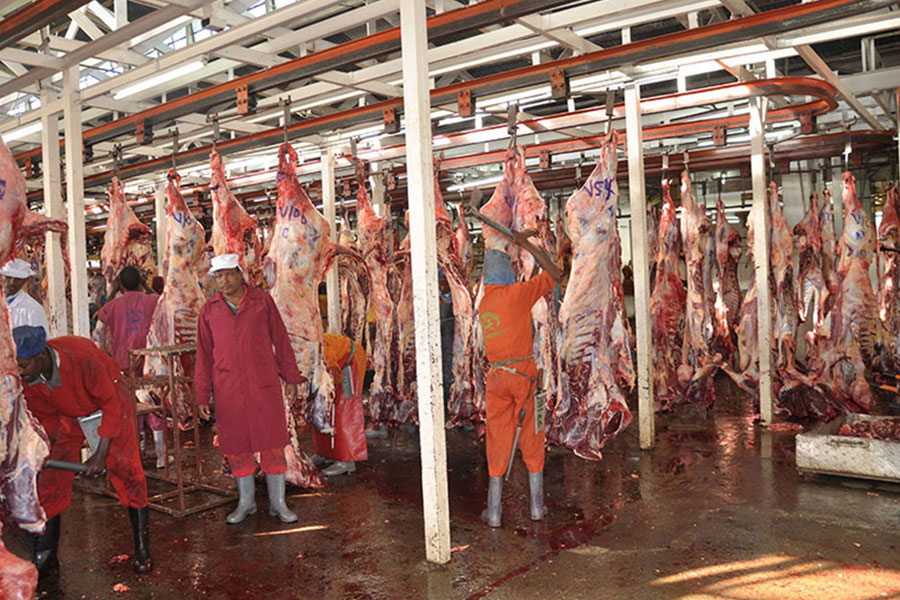
Radar | Apr 19,2025
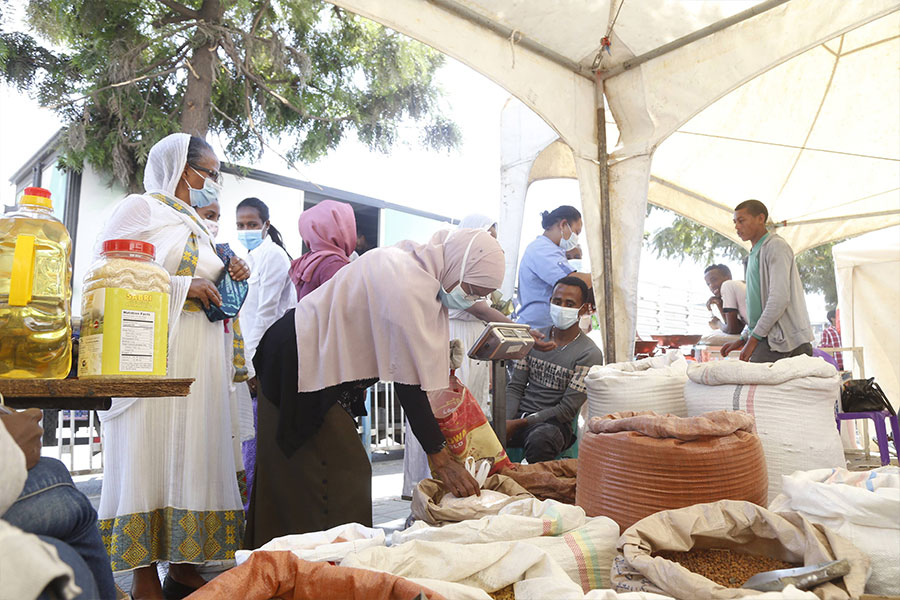
Agenda |

Dec 22 , 2024 . By TIZITA SHEWAFERAW
Charged with transforming colossal state-owned enterprises into modern and competitiv...

Aug 18 , 2024 . By AKSAH ITALO
Although predictable Yonas Zerihun's job in the ride-hailing service is not immune to...

Jul 28 , 2024 . By TIZITA SHEWAFERAW
Unhabitual, perhaps too many, Samuel Gebreyohannes, 38, used to occasionally enjoy a couple of beers at breakfast. However, he recently swit...

Jul 13 , 2024 . By AKSAH ITALO
Investors who rely on tractors, trucks, and field vehicles for commuting, transporting commodities, and f...

Sep 13 , 2025
At its launch in Nairobi two years ago, the Africa Climate Summit was billed as the f...

Sep 6 , 2025
The dawn of a new year is more than a simple turning of the calendar. It is a moment...
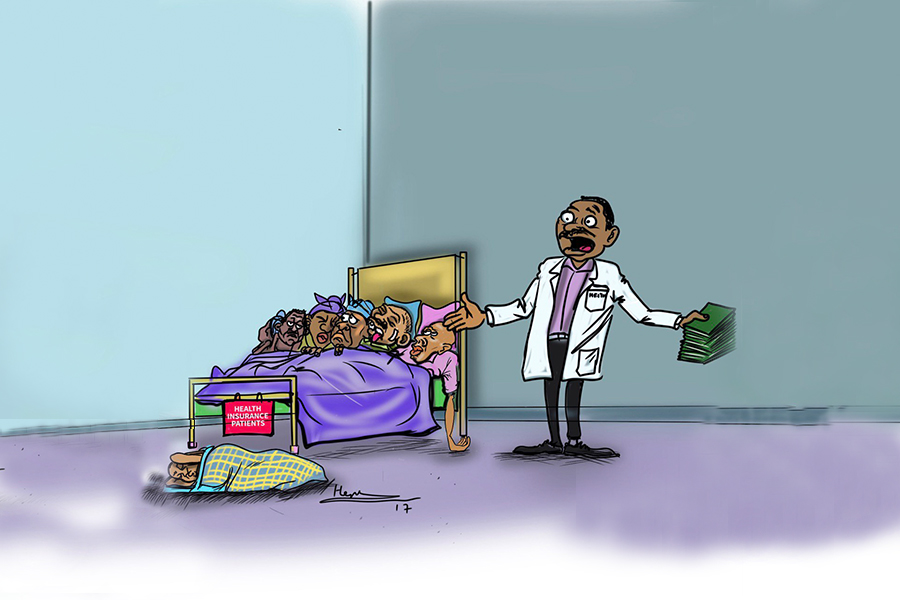
Aug 30 , 2025
For Germans, Otto von Bismarck is first remembered as the architect of a unified nati...

Aug 23 , 2025
Banks have a new obsession. After decades chasing deposits and, more recently, digita...